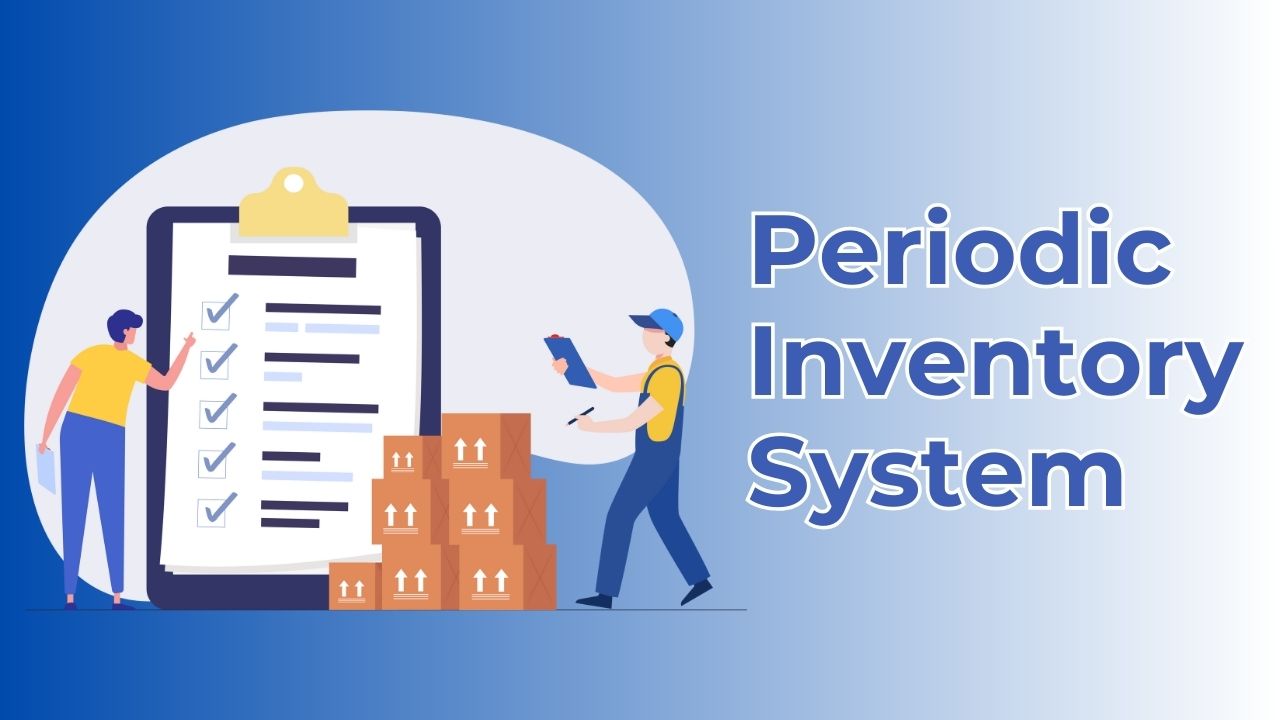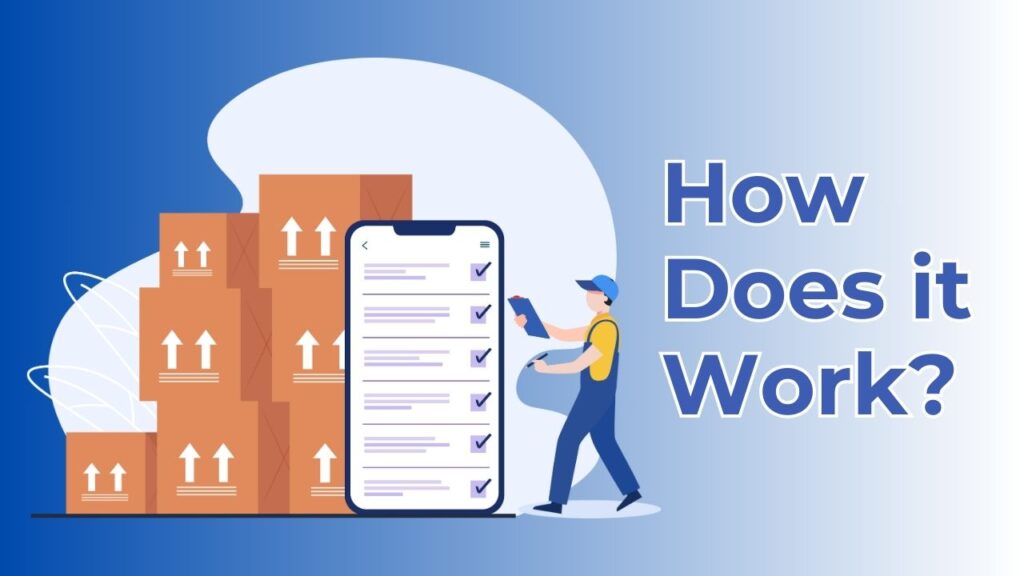When you are running an e-commerce business, there are several nuances that you need to take care of to break even and then start making profits. One of the critical aspects of any business is managing your inventory efficiently.
Whether you focus on real-time supervision, a passive outlook, or a periodic inventory system management strategy, it is up to you. Each has its pros and cons.
In this article, we focus on periodic inventory and how it works, among other things. So, without further ado, let’s begin.

| Table of Content |
Part 1. What is a Periodic Inventory System?
The periodic inventory system is a periodic valuation accounting method for your inventory. You choose a period, whether it’s every week, fortnight, or even six months. At the start of each period, you count your inventory, and at the end of each cycle, you count the inventory again, including how much inventory moved.
In the ledger, you only update the count of items in the inventory instead of updating the information after every sale and purchase. Delivery costs and items bought and sold are kept in a separate account until the period ends.
This method benefits small—to mid-sized businesses that don’t have an active item sold, which isn’t sold as often.
Part 2. How Does Periodic Inventory Work?
Based on your company’s needs, you can update the periodic inventory system monthly, quarterly, or annually. The frequency will depend on how much your product is sold and your accounting needs. At the end of each of these cycles, you update and consolidate your inventory in your warehouse, including items on hand and the amount of items sold according to their cost.
A simple calculation for a periodic inventory system is the physical item count in your inventory at the start and end of the period and all the purchases you made.

This system is perfect for businesses that do not need accurate information on hand daily. This helps them keep the cost low, especially if you have a limited number of SKUs.
Until the period ends, each purchase you make will be recorded in the purchase account, not the general ledger. The information for each purchase you make, along with the cost of goods sold or COGS, is noted within the system.
Periodic Inventory System Features:
The following features are included with the help of this periodic inventory system.
- You define different accounts that will contain individual financial books, a combination, and subsidiaries.
- Your management uses a scheduled script in the system that helps them create different journal entries.
- It also includes custom reports such as Daily journal creation, daily journal creation for Not Needed for Transactions, some error reports, and any modified transactions.
- You can also assign different roles in the software, such as making one individual a Principal Accountant.
Part 3. How to Calculate Periodic Inventory?
The Basic Formula to calculate your periodic inventory is taken as the Cost of Goods Sold (COGS), which can be represented as follows:
Your COGS = BI + P – EI
Here:
COGS = Cost of Goods Sold.
BI = Beginning inventory at the start of the period.
P = Purchase you made during a particular period.
EI = Ending inventory, which is for the end of the period.
You calculate the physical count of each individual item and its correlating cost based on FIFI and LIFO methods, along with the weighted averages of each item. You need to subtract this cost of goods sold from the amount mentioned calculated through, say, FIF.
For example, your company has a BI of $100,000 at the start of your cycle. At the end of your cycle, the purchase amount for outgoing items is, let’s say, $120,000. Finally, you count the physical amount of items, and their cost calculated this way comes out to be $80,000.
So, the Cost of Goods Available here will be = BI + PI, or $220,000. The total Cost of Goods Sold this way will be calculated by subtracting the CI amount from the above amount. Your COGS will be $220,000 – $80,000 = $140,000.
Keep in mind the following nuances here:
- Every expense you make for the production of your items during any period will be the cost of sales. Labor/material costs are included here. You do not include sales or distribution costs.
- If you don’t know the actual number of your inventory due to a continuous shift to a new period, you use the remaining stock from that period.
- If you price each item in the system, you must add a percentage of the original to start making profits.
Part 4. Perpetual vs. Periodic Inventory

Let’s discuss the difference between perpetual and periodic inventory and see which one is best for you. Though a few key aspects differ, they can easily work in unison.
Tracking Data and Transactions
The perpetual method will monitor each of your transactions and input the data into the system, while in periodic inventory, you do that at the end of each cycle. It is a given that perpetual will require more administration and decisions more often.
Unknown Variables
As there are fewer inputs that you need to make in a periodic inventory system, you have better control of unknown variables. However, as the business grows, it is advisable to make the variables known and shift to a perpetual inventory management system.
Software Updation
With the perpetual system, you need to update the account regularly in the general ledger, whereas in periodic inventory, you do that at the end of each cycle or when you do the physical count.
COGS Account
Another difference here is that in the perpetual system, you need to update the account after each sale; in the periodic, you only do that when you are accounting.
Account Used
The final difference between these two systems is the approach to accounting. For example, if you are using perpetual accounting, you need to make accounts for each type of material or product. So you must create one account for merchandise and the other for raw materials. Each individual record and entry is input when it arrives or is used for manufacturing or dispatching.
This isn’t the case with periodic inventory because you input all the values in the purchase asset account for purchasing when the counting is done. For the inventory, you keep a general ledger and don’t record each item.
Part 5. Pros of Using a Periodic Inventory System
Easier Implementation
The periodic inventory system maintains records less frequently, which simplifies the calculation and makes this amazing system quite easy to manage and implement. Many small companies don’t even go digital and keep manual physical records as they have smaller inventories to manage.
The easier it is to manage the count and inventory, the fewer staff you need to hire. So, implementing this system requires little to no time.
Recommended for Smaller Businesses
In the periodic inventory system, as there is a physical count at the end of a period, the count is simple as you are a small business maintaining a minimum inventory size. This ease allows the business to make good forecasts based on sold figures. Keep in mind that this system is not recommended for large businesses as there are too many moving parts.
Furthermore, as the business is small, you can increase your frequency based on your turnover. Whether you do it daily or weekly to get a sense of things, it is your choice.
Not Expensive
It is a given that when you don’t have to employ a lot of staff to manage your inventory, you are saving overheads. Furthermore, you are not installing any expensive software to enter data. Finally, as your inventory count is low due to lesser production, you won’t need complex machinery or a system to handle it.
Conclusion
Inventory management efficiently is crucial to the success of any business. When you want to make a profit, you must ensure that you don’t overstock or keep dead items in your inventory. Now, if you are a small business, a periodic inventory system is best for you as you don’t need to make regular inventory checks. You take the business as you receive it according to a certain period. The periodic inventory methodology needs to work better if your business is booming; in those cases, you have to look elsewhere. In this scenario, it is best to use a third-party logistics company like NextSmartShip to manage that. Whether it’s picking, packing, storing, or delivering, a 3PL like NextSmartShip manages everything at affordable costs. So visit the NSS website today and see why they have the best express and standard shipping rates, among many other features.


